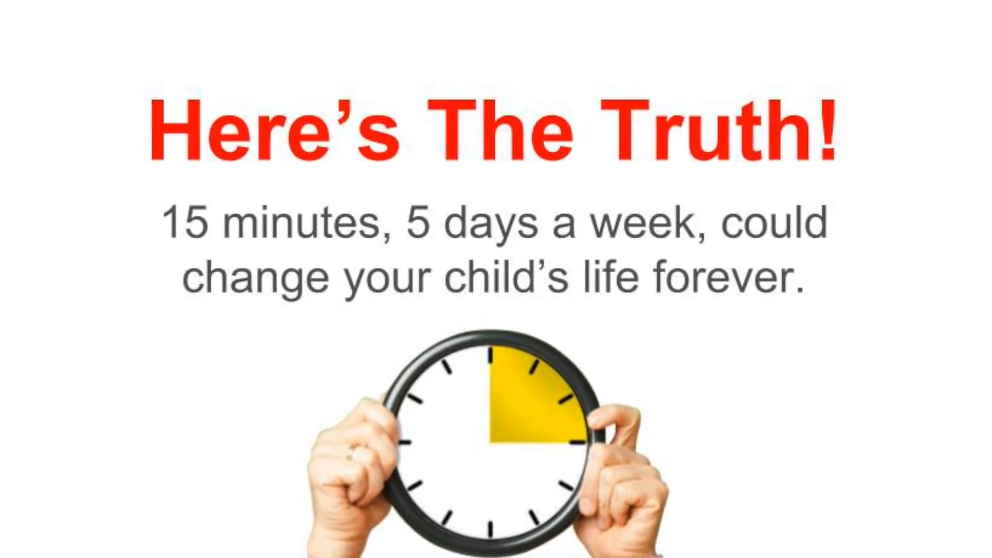Dyspraxia / DCD, Free Downloads & Checklists
Dyspraxia Symptoms in Children – How to Help + the Dyspraxia Checklist
Is your son or daughter constantly losing things? Do you spend each morning scolding him for never being able to find his shoes, hat, or jumper? Is it impossible for her to keep her room tidy affecting his daily living?
Does his disorganization seem to carry over into poor penmanship and sloppy homework? Problems with organization, tidiness, & messy handwriting are actually common dyspraxia symptoms in children.
Dyspraxia is a neurological disorder that affects one’s ability to plan and process motor tasks. This unique learning disability makes it difficult to plan what to do and how to do it.
For people with dyspraxia, it often means they don’t follow-through with putting things away, following a series of instructions, or completing tasks in general.
Also, since dyspraxia affects gross motor skills, it often causes children to have messy handwriting.
Unfortunately, the problems associated with dyspraxia aren’t always clear. They are often masked, overlooked, or lumped with other over-arching learning disabilities. There is also no single clinical dyspraxia test. Therefore, many people with it are never diagnosed.
Dyspraxia Tests
An occupational therapist can, however, identify many of the issues. They use a well-researched and standardized battery of tests to help identify many of the issues created by dyspraxia and has treatments for dyspraxia.
Included are Sensory Processing and Praxis Tests (SIPT). I have been using these tests myself for many years with a reliable outcome. However, it should be said that every person or children with dyspraxia presents with individual functional issues.
Symptoms of dyspraxia manifests in many ways, some might be clumsy, another competent in sport, but with poor organization of belongings or have a language disorder. That’s why it’s important to get a very detailed, whole view of each child’s symptoms and struggles following developmental milstones.
In fact, individuals with dyspraxia is a fairly common. Researchers believe that anywhere from 6-10 percent of children today show some of the signs of dyspraxia. Plus, it’s a condition that often overlaps or goes hand-in-hand with ADHD. Many parents also seek medical advice for their kids suffering with dyspraxia
The good news is that there are many special educational relatively-simple activities for a child with dyspraxia that can help. Dyspraxia symptoms in children can be helped with activities that improve coordination, balance, fine motor skills, speech and language, and daily tasks that are otherwise affected by having dyspraxia.
Use our Dyspraxia Symptoms Checklist of common dyspraxia symptoms to start a Sensory Profile that you can discuss with your pediatrician.
What is Dyspraxia in Simple Terms?
The term Dyspraxia is a condition that affects a person’s ability to coordinate movement or speech. The word itself comes from the Greek words, Praxis ‘to do’; and the prefix Dys ‘unable to do’ and affecting their everyday activities.
Individuals with dyspraxia body is unable to do what the child’s brain tells it to do. This creates clumsy movements and difficulty in learning new tasks. In addition it causes difficulty with organization of the body and of belongings.
It is often confused with developmental coordination disorder (DCD). However, it is not quite the same. Developmental dyspraxia has to do with the planning. It has to do with the process of sending messages from the brain to the body.
Let’s use an example. When the average person wants to write something, their brain sends a fast series of signals to their body. So, these might be: move hand, grip pencil, adjust to writing grip, move hand to paper, move fingers and wrist in the right series of lines and circles to make letters, etc.
There are hundreds of signals sent back and forth between your brain, nervous system, muscles and back again for every single movement we make. We just don’t usually think about each step in the process. You can easily see why messy handwriting is one of the often-picked-up dyspraxia symptoms in children.
So, what is dyspraxia? In simple terms, a person with dyspraxia has a lag in that movement preparation process. There are hiccups in the neurological process. It might be that they take longer to get the signals from the brain to the body.
Perhaps their reaction time is slow. Or, it might be that the coordination of the messages is slightly out of synch, which makes their physical movement equally out of synch. This makes lots of everyday activities for children with dyspraxia difficult.

Dyspraxia Symptoms in Children
Though there is no single, clinical dyspraxia test, there are some limited standardized tests. Also, there are many typical characteristics indicating dyspraxia symptoms in children at various ages. Together, these might help you determine whether or not you should talk to your pediatrician or occupational therapist about dyspraxia.
Here are some common dyspraxia symptoms in children of different ages:
3-5 years old
- Clumsy, bumps into things often
- Cannot jump or skip
- Does not show right or left hand dominance
- Often drops items or objects
- Cannot grasp a pencil to draw
- Fumbles with buttons and zippers
- Speaks very slowly
- Speech is slurred
- Often unintentionally breaks toys
6-12 year olds
- Has poor hand-eye coordination
- Struggles with sports
- Struggles to care for belongings
- Difficulty planning tasks, e.g an assignment
- Has trouble with balance
- Can’t stand or sit in one place for very long without getting tired
- Has difficulty writing
- Cannot grasp small items, like moving pieces on a game board
- School bag and desk are often messy
Teenagers
- Avoids bike riding
- Stumbles often when walking
- Awkward running gait
- Difficulty organizing tasks, routines, and/or events
- Seems clumsy and bumps into things
- Has “immature” reactions or responses in social situations
- Seem disoriented, gets lost even in commonly-visited places
- Doesn’t speak much, or when he/she does, it is slurred or slow
- Often speaks too loudly or too softly
- Fumbles with unlocking doors and holding keys
Motor Dyspraxia vs. Verbal Dyspraxia
Occupational therapists and doctors generally categorize two “umbrella” types of dyspraxia symptoms in children. These are: motor dyspraxia or verbal dyspraxia.
With motor dyspraxia, gross or fine motor skills are affected. For example, a person might struggle with balance so severely that it affects their walking or jumping. Or, it could be something smaller, like writing or buttoning clothes.
With verbal dyspraxia, the tongue is affected, and therefore a person’s speech might slur or stutter.
The symptoms don’t just end with the physical manifestations of dyspraxia. Many social activities for children with dyspraxia are difficult or awkward. For instance, they may behave immaturely in social situations and might come across as a slow learner.
This, even though they typically have average to above-average intelligence. Because of their challenges in handwriting, organisation and following instructions, children with dyspraxia test poorly in school, which often puts them behind.
Dyspraxia – How it’s Diagnosed
If you suspect your child might be dealing with developmental dyspraxia, the first place to go is your pediatrician or GP. A general practitioner alone isn’t likely to give your child a dyspraxia diagnosis, though.
They’ll evaluate his general motor planning abilities. And, if they see any signs, they’ll refer to a team of other experts. Together, a physiotherapist, occupational therapist and speech and language therapist will assess your child.
The diagnosis process and an occupational therapist specializing in dyspraxia, will likely help you to isolate the specific form of dyspraxia your child is dealing with.
Whether it is ideomotor dyspraxia, ideational dyspraxia, oromotor dyspraxia, or constructional dyspraxia. This will indicate where your child experiences most of the functional difficulties because of this condition.
What to do If Your Child Has Been Diagnosed With Dyspraxia
There is no cure-all treatment for children with dyspraxia. But, early intervention can make a huge difference in the quality of life for an affected child.
There are many activities for children with dyspraxia to strengthen their motor skills, coordination, and organisational skills.
1. Have a consultation with a pediatric occupational therapist.
Having an expert in childhood development assess your child’s difficulties and customize an occupational therapy plan is a great source of help to families.
Click here to book an online consultation with one of our pediatric occupational therapists at CoordiKids. We are available almost anytime, anywhere using Skype or a simple phone call.
Use our Dyspraxia Symptoms Checklist of common dyspraxia symptoms to start a Sensory Profile that you can discuss with your pediatrician.
2. Start a motor skills exercise therapy program.
There are many physical exercises and activities for children with dyspraxia. Furthermore, they’re ones that you can do together each week to develop coordination, balance, and muscle tone for gross and fine motor skills.
Our online program, for example, sends a series of simple exercises to your email every other week. Each set of exercises lasts only 15 minutes per day, and they progress month to month.
This in-home therapy program is called Home Courses. And it includes the same exercises we use in our office visits with clients! In addition, it also gives you the option to schedule a chat with your therapist.
So, it is a custom therapy program from the convenience of your own location. Furthermore, it’s something that fits into your schedule.
3. For verbal dyspraxia, working with a speech therapist may help.
A speech therapist will help children enunciate better and strengthen their mouth coordination. And because oral motor skills often overlap with gross motor skills, our Home Course program includes oral muscular strengthening exercises as well.
4. Consider working with a pediatric psychologists.
These specialists are key in helping children with developmental difficulties, like dyspraxia. They help them adjust appropriately to their ever-changing world, socially and behaviorally.
Often, they are a great mediator between children and parents. This is to navigate the social difficulties associated with dyspraxia, sensory processing disorder, ADHD or ASD. These strategies will help with the functional issues that your child experiences.
For example, understanding the rules of a game. But it will not address the motor component and the underlying issues to improve the underlying motor components.
